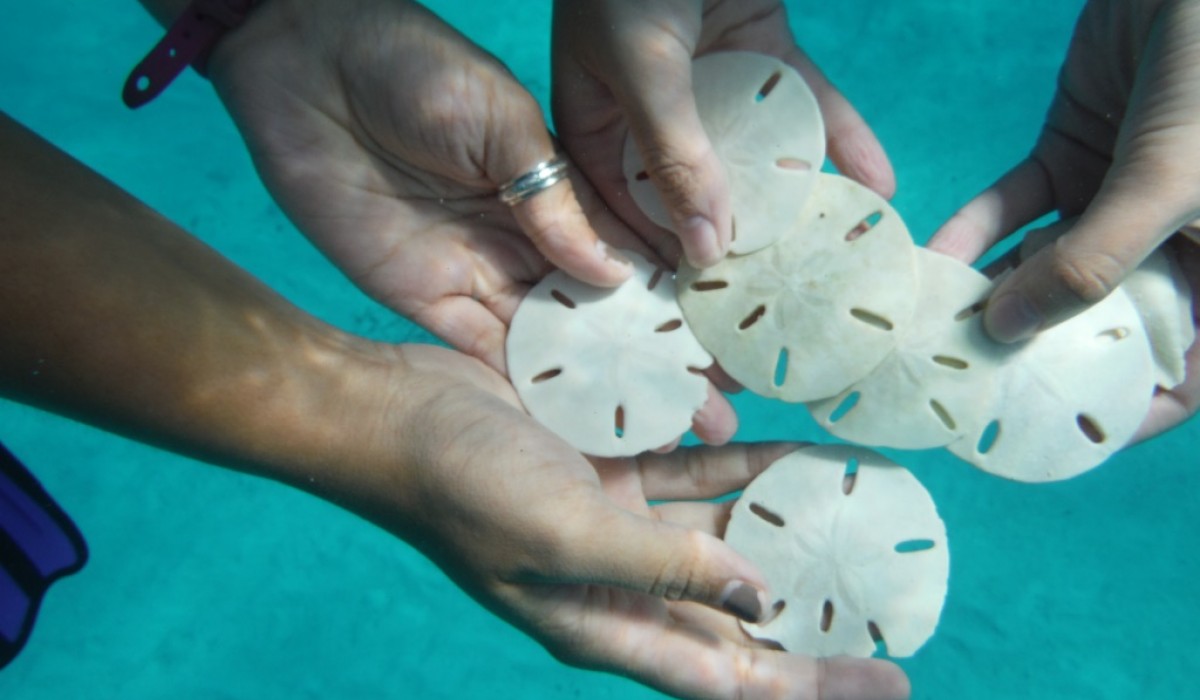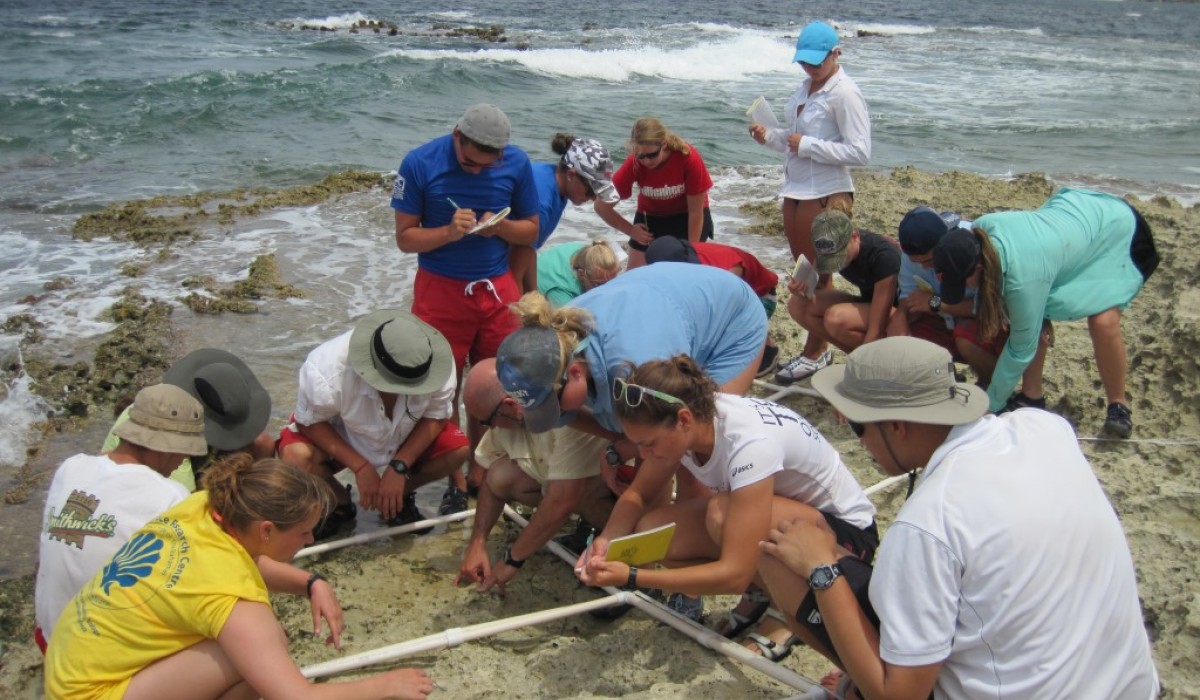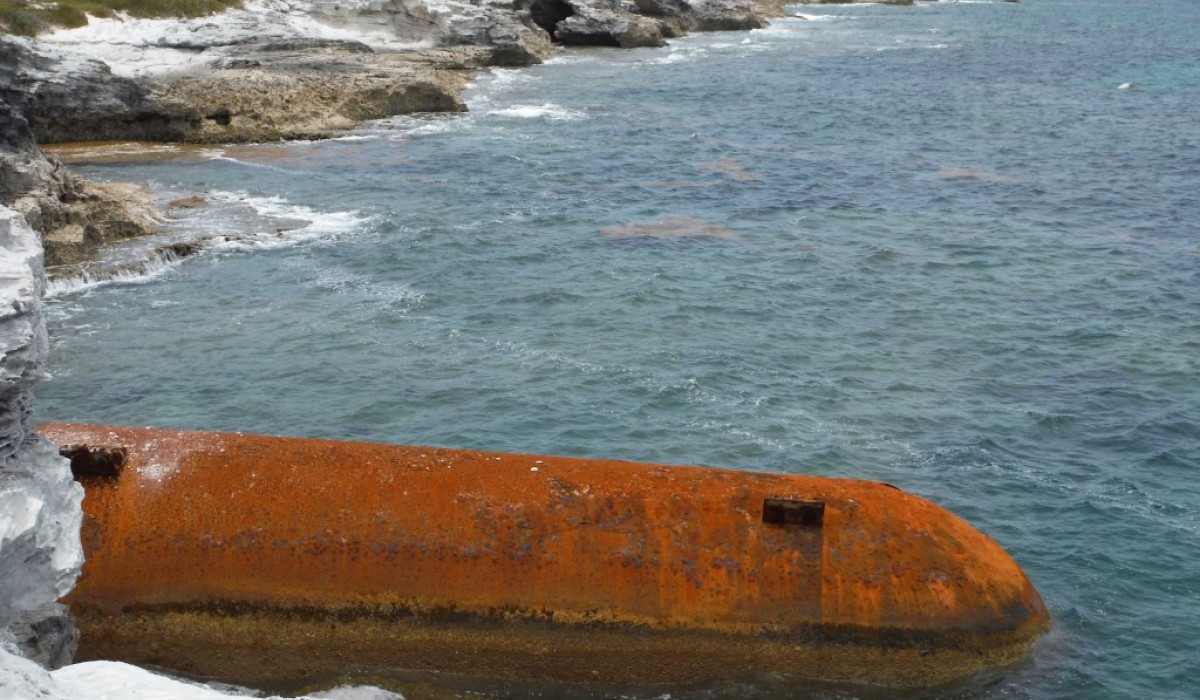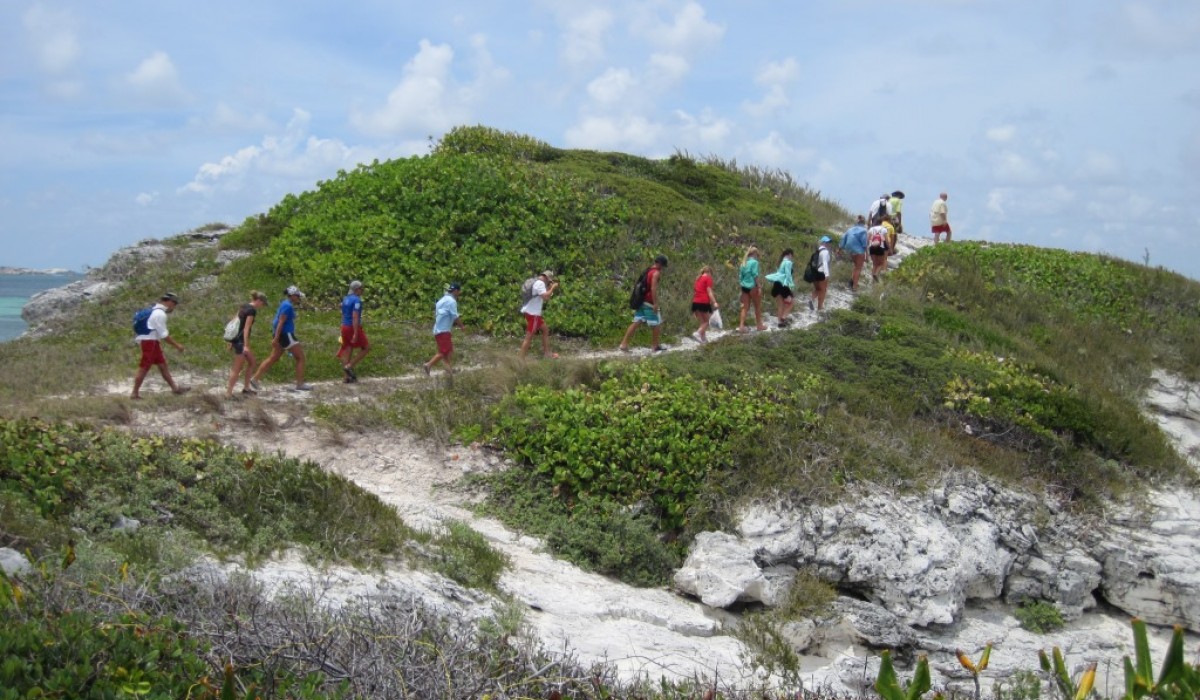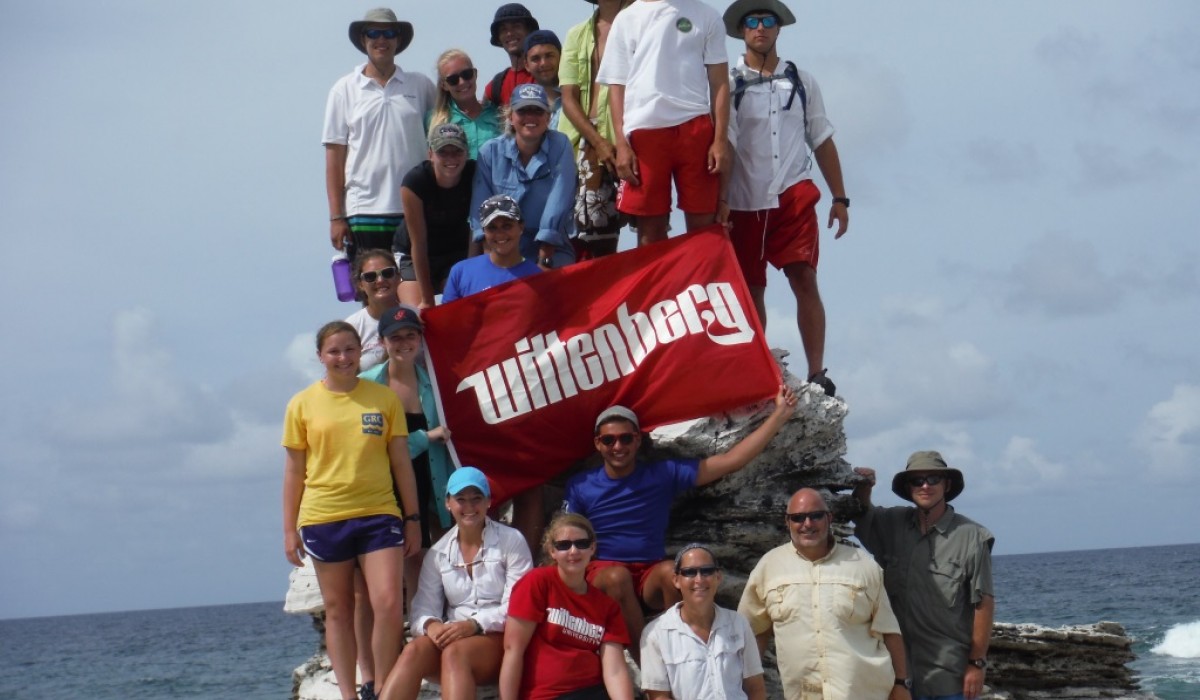A hip-hoppin horray hello from Witt students here at the Gerace Research Center in San Sal. Today, May 29, 2014, started with a typical 7:30 am breakfast followed by adventure one of the day, which consisted of a snorkel trip to Sand Dollar, a coral reef ecosystem on the west side of the island. With a fabulous temperature of 84.6° F, we began our snorkeling excursion with an objective to think outside the box by searching for patterns or trends of the relationships and behaviors of organisms within the ecosystem. This site was covered in sand dollars, sea fans, parrotfish, and fire coral. We also witnessed a few sea biscuits, otherwise known as heart urchins, and two very large southern stingrays. Around lunch time, we rounded the troops up and headed back to the research center for lunch where some students caught up on some Z’s and others worked on presentations.
In the afternoon we loaded up on the pick-up truck and headed over to North Point where we hiked a trail that lead us across this part of the island. With the sun shining, aqua water sparkling, and the sound of waves crashing up against the rocks, the views were, as always, beautiful. Along our 45 minute journey, we stopped to take a look at a tank from a ship carrying liquefied natural gas tank that in 1989 had lost power and eventually drifted to shore to rust on the east side of North Point. When we questioned why we didn’t come on this side of North Point to snorkel and explore the shipwrecked tank, we were informed that it was because of the abundance of sea wasps, related to the commonly known Box Jellyfish, in the area. Next, the trail led us to a cut in the island; a small channel that divided North Point from the cay known as Cut Cay. This cut was actually made by the Spanish when they owned the island for the transportation of deep ships. However, we’re thinking it wasn’t too successful given that it was only about waist deep. We waded across the cut and headed up to the north-most point of the cay where we would be completing our task of the day: to set-up and complete transects of the organisms along rocky intertidal zones. This is done by setting square meter quadrats along a designated distance and then identifying and quantifying the organisms along this transect. By doing so, the class was able to isolate which organisms were more present at specific levels of the intertidal zone. While fuzzy chiton, West Indian topsnail, and checkered nerites were abundant towards the lower level; false prickly periwinkles, beaded periwinkles, and blood-tooth nerites were more plentiful at upper levels. After all of our information was collected, instead of walking back on the trail we came on, we made our own trail back to the truck by trekking through the shallow waters along the island.
Before heading to class, we enjoyed dinner in the GRC cafeteria. During class, three presentations were given and we learned how to use our data collected from the transect experiment to make histograms. After the anxiety of wanting to know what we got on our exams passed with the return of our grades, the class parted and decided it was prime time for some Batman movie action. With another day under our belt, we continue to explore and learn about this beautiful island and are always amazed at the daily journeys and wonderment it brings.
-Rebecah Delp ’16, Jenny Lehman ‘17


